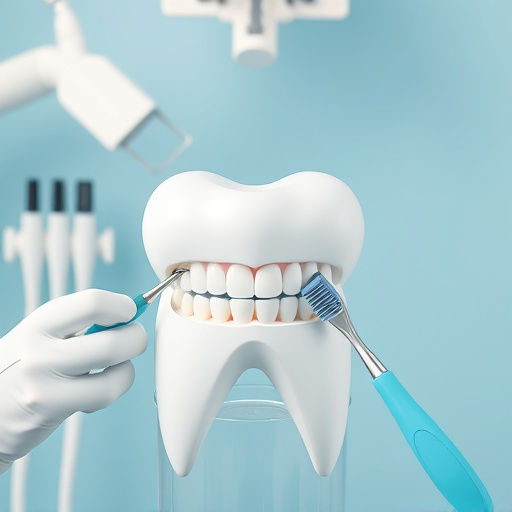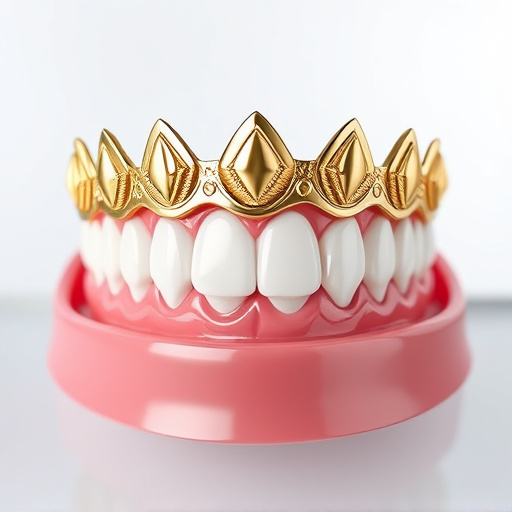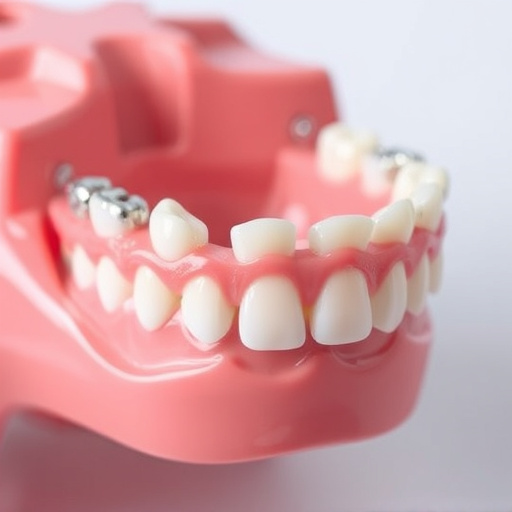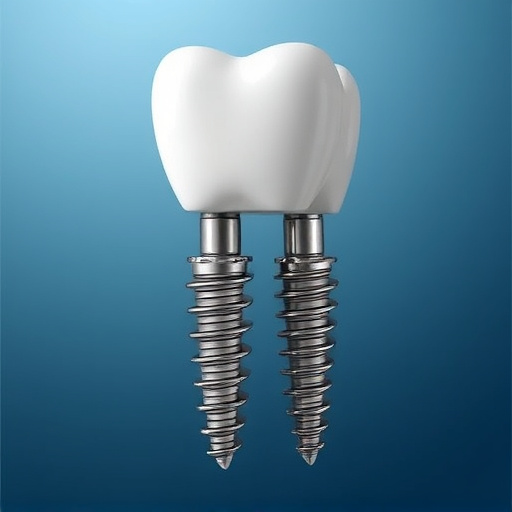Crown lengthening procedure is a cosmetic dental surgery to expose more natural tooth by modifying the gum line, addressing health issues like gum recession and tooth replacement. It's a key step before dental implants and offers both aesthetic and functional benefits. After careful planning, dentists make an incision in the gums, remove bone and tissue, and recover involves temporary discomfort similar to extractions.
Crown lengthening, a common cosmetic dentistry procedure, involves gently reshaping your jawbone to expose more of your natural tooth. This simple yet effective technique is often sought after for aesthetic reasons, providing a longer, straighter appearance. Beyond beauty, it can also address functional issues like poor fit of dentures or teeth grinding. Understanding this procedure and its benefits is key in navigating modern cosmetic dentistry plans.
- Understanding Crown Lengthening: A Basic Guide
- Common Reasons for Undergoing the Procedure
- The Process and Recovery of Crown Lengthening
Understanding Crown Lengthening: A Basic Guide

Crown lengthening is a surgical procedure commonly employed in cosmetic dentistry to enhance the appearance of a patient’s smile. It involves carefully modifying the gum line to expose more of the natural tooth, effectively lengthening the crown. This technique is particularly useful when patients have teeth that are slightly beneath the gum line or when there’s a desire to create a more aesthetically pleasing smile design. By gently reshaping the gums and bone structure, dentists can reveal healthier, longer-looking teeth.
The process begins with a detailed assessment of the patient’s oral health and desired outcomes. Dentists may recommend crown lengthening for various reasons, including improving the aesthetics of misaligned or poorly positioned teeth, facilitating better cleaning, and reducing the risk of gum disease associated with partially covered teeth. Following a consultation, if chosen as part of a cosmetic dentistry plan, this procedure can be combined with dental implants or tooth extractions to achieve the desired smile transformation while ensuring long-term oral health.
Common Reasons for Undergoing the Procedure

Many patients opt for crown lengthening procedures for a variety of reasons that extend beyond purely aesthetic desires. This common cosmetic dentistry treatment addresses issues related to tooth structure and gum health, often left unresolved by traditional dental care. One of the primary motivators for undergoing this procedure is to achieve better fit with dental restorations like crowns or bridges. By increasing the visible portion of teeth, a patient’s existing restoratives can be replaced with newer, more properly sized ones, leading to improved comfort and chewing functionality.
Additionally, crown lengthening can mitigate problems caused by gum recession, a common concern in restorative dentistry. Receding gums expose sensitive tooth necks, making teeth appear shorter and leading to potential pain and discomfort. This procedure helps create a healthier gum line, reducing the risk of periodontal disease and enhancing the overall appearance of a patient’s smile. Moreover, it serves as a crucial precursor for those considering dental implants, ensuring optimal placement and promoting long-term success of these advanced restorative solutions.
The Process and Recovery of Crown Lengthening

The crown lengthening procedure is a common cosmetic dentistry treatment that involves reshaping the gum line to expose more of the tooth’s natural structure. This process begins with precise planning during routine oral exams, where dentists determine the ideal amount of tooth exposure for both aesthetic and functional purposes. During the actual procedure, a small incision is made in the gum tissue, followed by careful removal of bone and gum to reveal the desired length of the tooth.
Recovery from crown lengthening typically involves some discomfort, swelling, and bruising, similar to that experienced after tooth extractions. Patients are often prescribed antibiotics and pain medication to manage these side effects. It’s important to follow post-operative instructions carefully, including keeping the mouth clean through gentle brushing and rinsing with salt water. As healing progresses, usually over a few weeks, patients can expect their smile to gradually improve, revealing longer and more attractive teeth.
Crown lengthening is a valuable procedure in cosmetic dentistry, offering both aesthetic and functional benefits. By addressing insufficient tooth length, it enhances smiles, improves gum health, and facilitates easier cleaning. Whether motivated by cosmetic desires or to preserve dental structures, understanding the process and its outcomes empowers individuals to make informed decisions about their oral care. This procedure, like any other dental intervention, requires careful consideration and a qualified dentist’s guidance.














